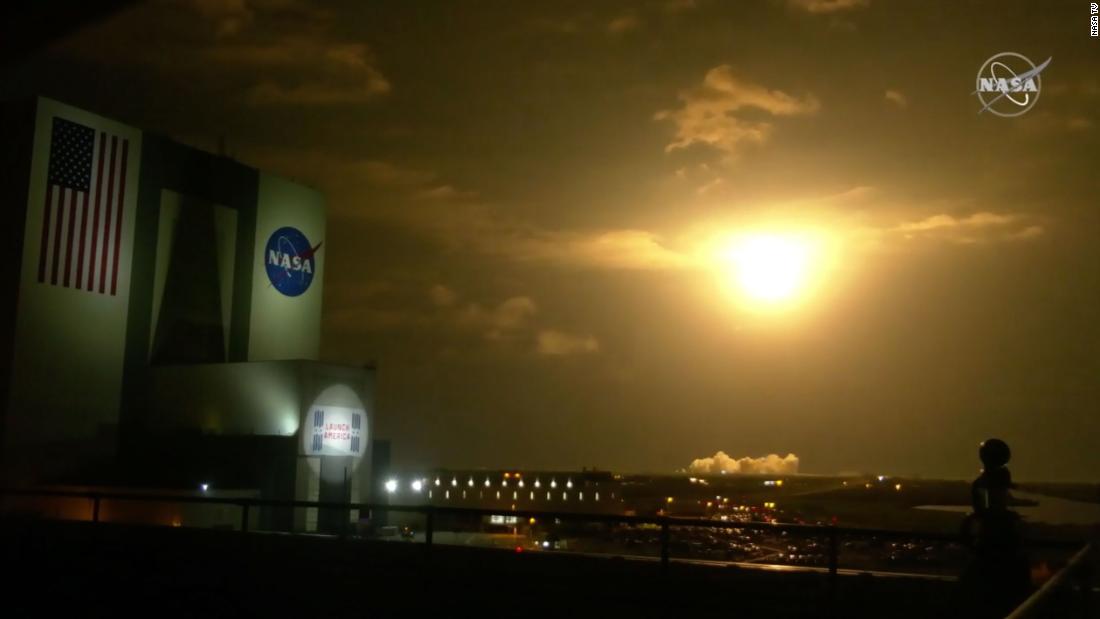SpaceX’s Crew Dragon spacecraft, carrying four astronauts from three countries, docked with the International Space Station on Saturday morning, kicking off the crew’s six-month stay in space.
This mission, dubbed Crew-2, is the third manned flight by Elon Musk’s company and the first to make use of a previously used private-sector propellant and craft.
The astronauts took off from the Kennedy Space Center in Florida on Friday morning and spent nearly 24 hours flying in orbit at more than 17,000 miles per hour as the Crew Dragon maneuvered toward the ISS, which orbits about 252 miles above Earth.
On Saturday morning, the capsule slowly lined up and moved to dock directly at one of the space station’s ports.
The crew consists of NASA astronauts Shane Kimbrough and Megan McArthur, Thomas Pesquet from the European Space Agency and Akihiko Hoshide from the Japanese space agency JAXA.
A main focus of the astronauts’ mission will be research with “tissue chips” or “small models of human organs that contain multiple types of cells that behave very similarly to how they do in the body” and that NASA hopes that it will advance in the development of drugs and vaccines, according to the space agency. That work builds on years of studying biological and other scientific phenomena aboard the ISS, where the microgravity environment can give scientists a better fundamental understanding of how something works.
Kimbrough, McArthur, Pesquet and Hoshide joined seven astronauts already aboard the station, four of whom arrived in a different SpaceX Crew Dragon capsule in November. That brings the current total staffing of the space station to 11, one of the largest crews the ISS has ever hosted. But that number will drop to seven when four of the astronauts return to Earth on April 28.
NASA has spent more than a decade working to increase staffing aboard the space station for 21 years after the withdrawal of its space shuttle program in 2011 left the Russian Soyuz spacecraft as the only option to carry. astronauts to and from the ISS. The United States had paid Russia up to $ 90 million per seat for those trips.
For years, SpaceX worked under a $ 2.6 billion fixed-price contract to develop its Crew Dragon spacecraft under NASA’s Commercial Crew program, which for the first time in the space agency’s history delivered the task of building and testing. a spacecraft capable of accommodating crew to the private sector.
(Boeing is working under a similar contract to develop its own capsule for the program. That capsule, called the Starliner, is still in the testing phase.)
The mission is another milestone in SpaceX’s efforts to reuse space hardware to reduce the cost of space flight. Both the Crew Dragon capsule, called “Endeavor,” and the Falcon 9 rocket that put it into orbit have flown into space before.
Although the company has returned to flying thrusters and spacecraft dozens of times in satellite launches and cargo over the past few years, this is the first time the company has repurposed hardware for a crewed mission.

